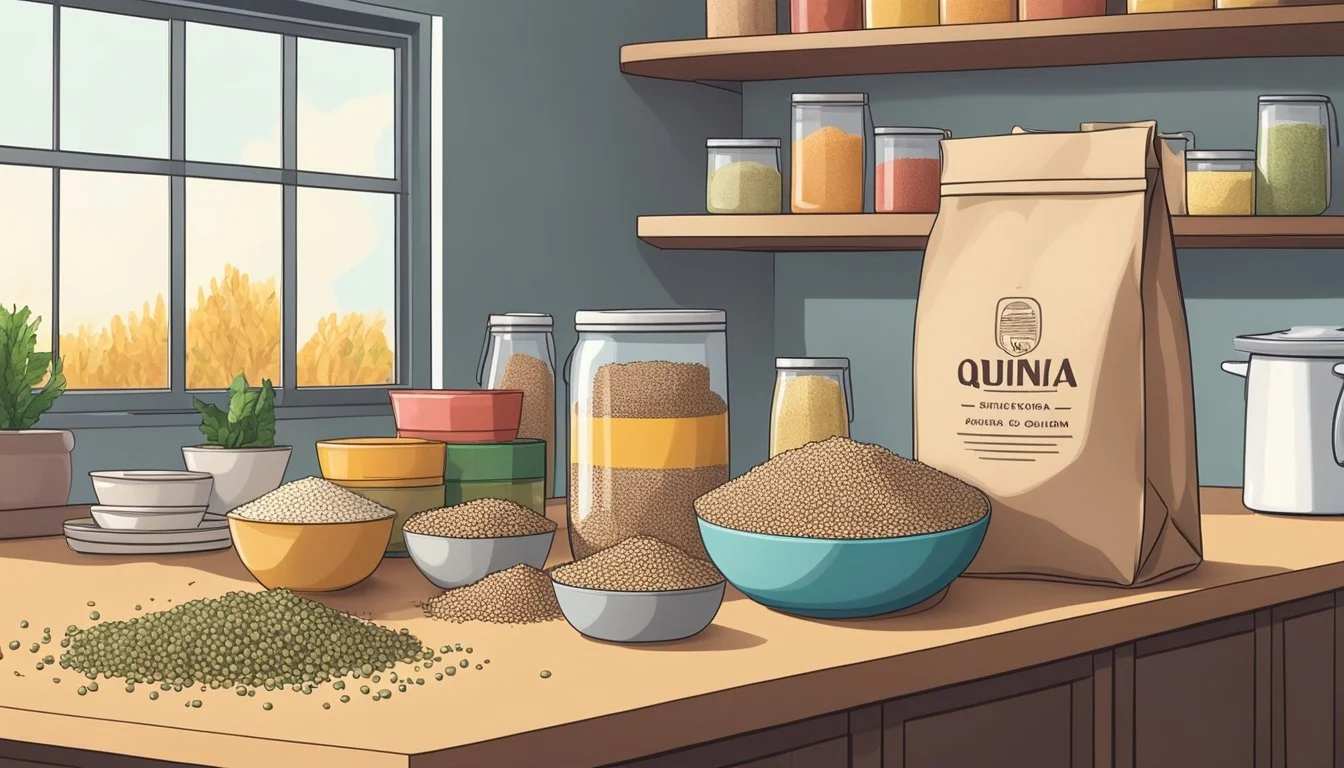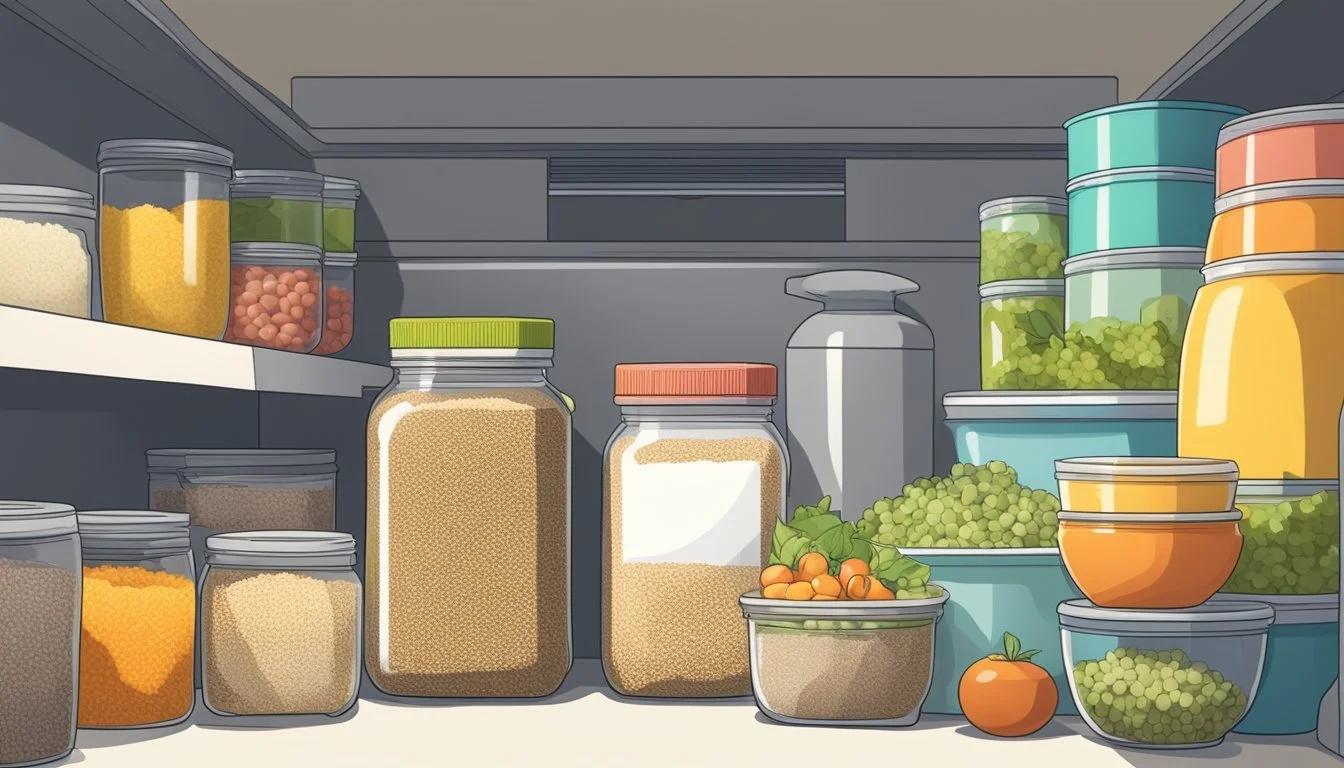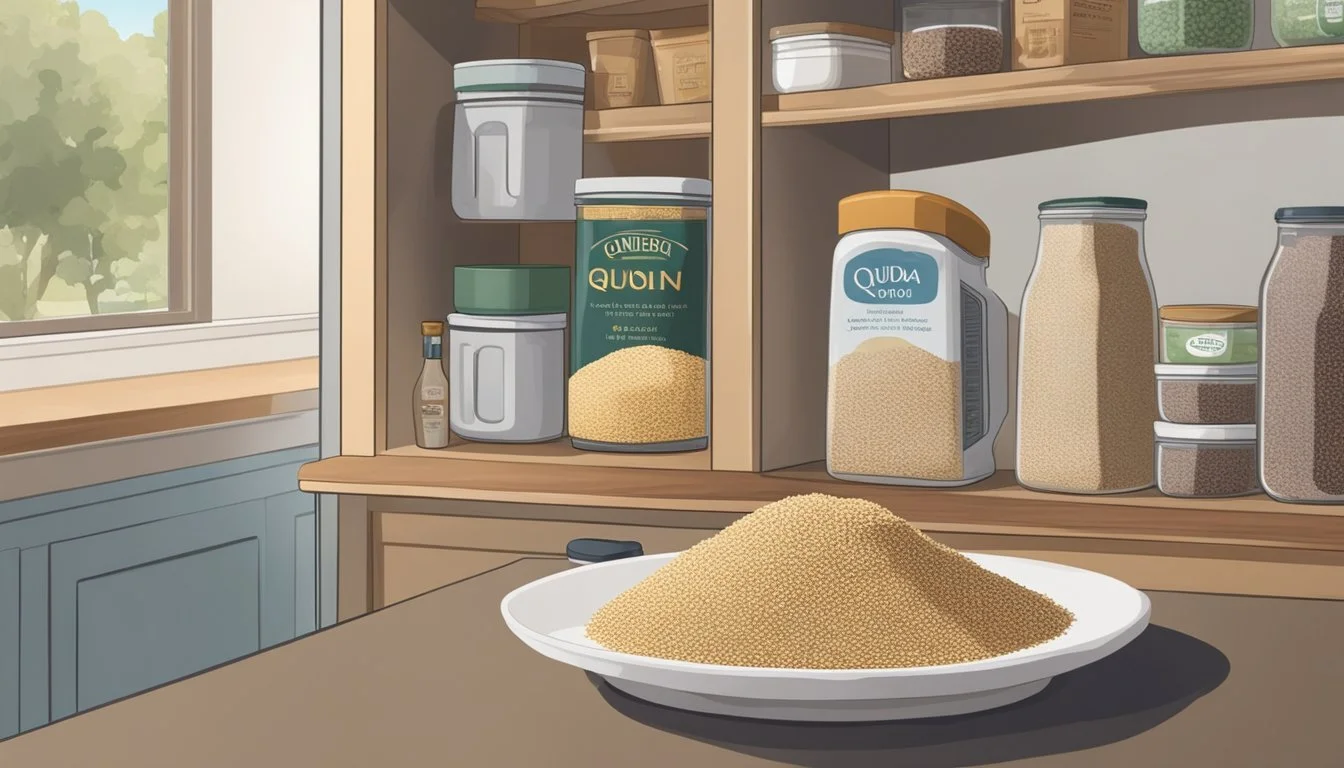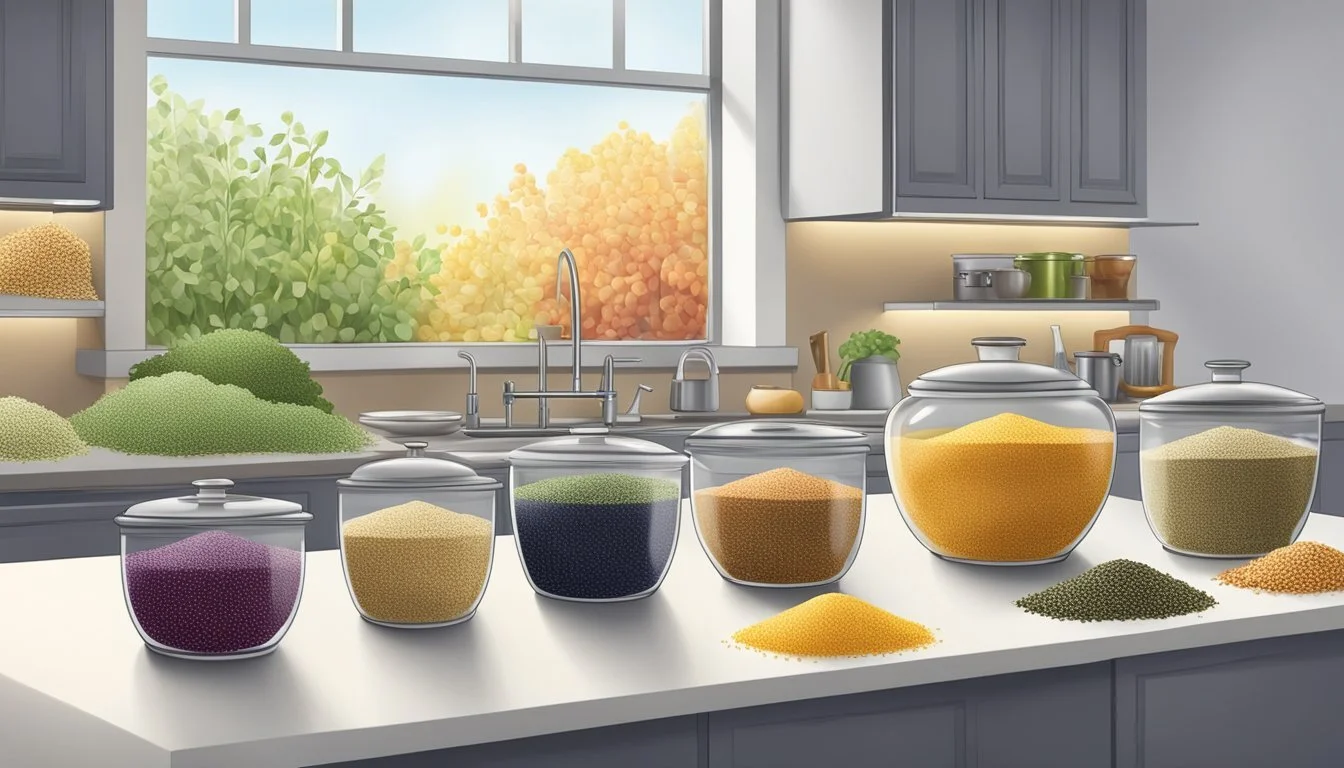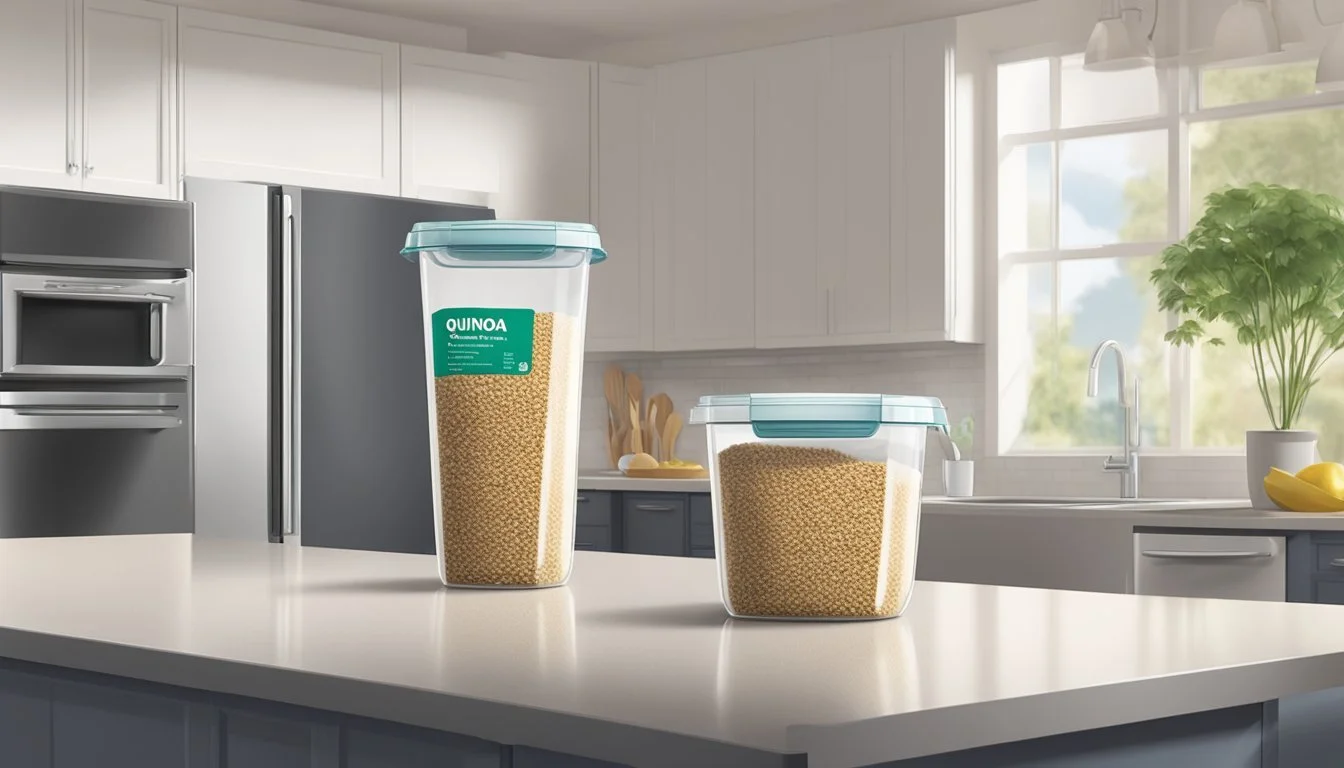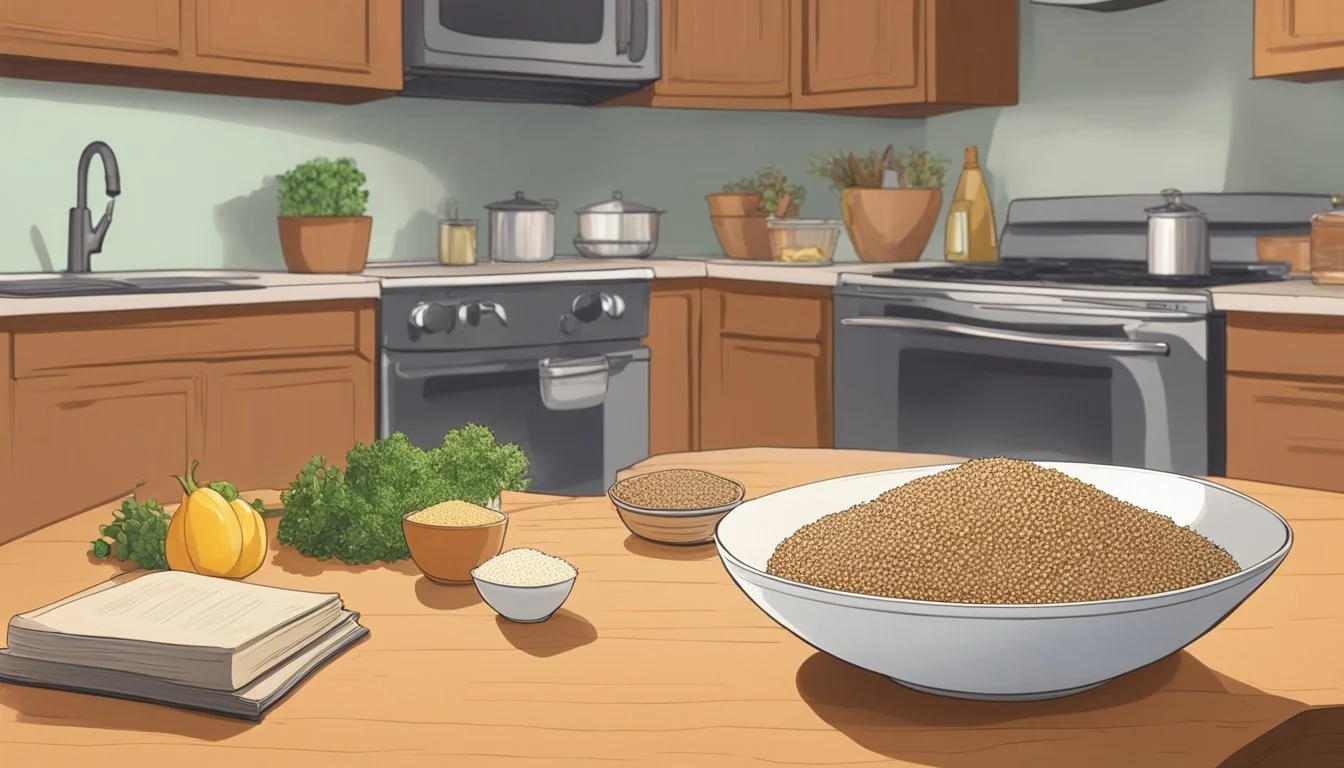Do I Have to Refrigerate Quinoa?
Storing Tips for Longevity and Freshness
Quinoa, (What wine goes well with quinoa?) a nutritious seed that has grown in popularity due to its health benefits and versatility in meals, has specific storage requirements to maintain its quality. Its shelf life can be significantly extended with proper storage techniques. Uncooked quinoa has a long shelf life when kept in a cool, dry place, typically lasting 2-3 years, and even longer if the conditions are optimal. Factors such as temperature, humidity, and container choice directly affect its longevity.
Once cooked, quinoa requires refrigeration to preserve its freshness and prevent spoilage. Storing cooked quinoa in an airtight container within the refrigerator can keep it safe to consume for 4 to 7 days. Freezing cooked quinoa can also be an option if a longer preservation time is needed, potentially extending its edibility up to 12 months. It's imperative to take these measures to ensure both safety and the retention of its nutritious properties.
The Basics of Quinoa Storage
Quinoa's shelf life and quality preservation can be significantly enhanced by proper storage techniques and conditions. Understanding how to store quinoa effectively ensures that its nutrients are maintained over time.
Proper Storage Containers
For long-term storage, quinoa should be placed in airtight containers to protect it from moisture, air, and pests. Suitable options include:
Mylar bags with oxygen absorber packets
Mason jars with tight-sealing lids
Vacuum-sealed containers
Utilizing these containers prevents the quinoa from becoming rancid, a process that can occur due to the fats in quinoa breaking down, especially when exposed to air and moisture.
Optimal Storage Conditions
Maintaining a cool and dry environment is crucial for extending quinoa's shelf life. Quinoa should ideally be stored at a temperature below 70°F (21°C). The guidelines for optimal storage conditions include:
Keeping quinoa in a dark pantry away from direct sunlight
Storing it in a location that remains consistently cool
Ensuring the storage space is dry to avoid moisture absorption
Shelf Life Determinants
The longevity of quinoa, both uncooked and cooked, is influenced by several factors, including storage conditions and signs of spoilage. Understanding these determinants is crucial to ensure quinoa remains safe to eat.
Factors Affecting Quinoa Shelf Life
Temperature: Quinoa's shelf life is optimal when stored in a cool environment, ideally below 70°F. Higher temperatures can accelerate the spoiling process and lead to rancidity, particularly in uncooked quinoa which contains natural oils.
Light: Exposure to light can degrade quinoa's quality. A dark storage space helps maintain its shelf life.
Moisture & Air: Both uncooked and cooked quinoa are highly sensitive to moisture and air exposure. For uncooked quinoa, an airtight container in a dry location is essential to prevent spoilage from moisture, which can lead to mold. Cooked quinoa must be sealed tightly and refrigerated to limit air exposure.
Storage Methods: Proper storage methods include keeping uncooked quinoa in airtight containers and refrigerating cooked quinoa promptly after cooling. Freezing cooked quinoa can extend its shelf life to up to 12 months.
Signs of Spoilage
Odor & Texture: A change in odor, usually unpleasant or rancid, indicates spoilage in uncooked quinoa. Cooked quinoa that has become slimy or drastically altered in texture should also be discarded.
Mold & Discoloration: Visual signs such as mold growth or discoloration are clear indications that quinoa should not be consumed.
Spoilage in Cooked Quinoa: Left at room temperature for over two hours, cooked quinoa is prone to bacteria growth and should be considered unsafe. In the fridge, cooked quinoa should be used within 5-7 days to prevent spoilage.
Refrigerating Quinoa
Refrigeration is crucial for extending the shelf life of both cooked and uncooked quinoa. It helps maintain its freshness by controlling temperature and moisture.
Storing Cooked Quinoa in the Fridge
Cooked quinoa can be stored in the fridge where it remains safe to eat for 4 to 7 days. To ensure maximum freshness, one should:
Transfer the cooked quinoa to an airtight container immediately after cooling.
Label the container with the date of storage.
Keep the fridge temperature at or below 40°F (4°C) to minimize the risk of bacterial growth.
Storing Uncooked Quinoa in the Fridge
While uncooked quinoa typically has a longer shelf life and doesn't necessarily need refrigeration, storing it in the fridge can be beneficial, especially if the room temperature exceeds 70°F (21°C) or if the environment is humid. For optimal storage:
Place the uncooked quinoa in airtight containers or sealed plastic bags to protect it from moisture and pests.
Ensure the fridge temperature is stable to avoid condensation which could compromise the quinoa's dry state.
Freezing Quinoa
For optimal long-term storage, both cooked and uncooked quinoa may be stored in the freezer. This process helps to extend the shelf life significantly, while maintaining the grain's nutritional value.
Freezing Cooked Quinoa
When freezing cooked quinoa, one should ensure it has cooled to room temperature before packaging it to prevent the formation of moisture, which can result in freezer burn. It is best stored in freezer-safe bags or airtight containers to minimize air exposure. Remove as much air as possible before sealing to protect the quinoa's texture and taste. It's recommended to lay the quinoa flat in an even layer, which makes thawing easier and preserves the quality. The frozen cooked quinoa typically maintains its quality for one to two months.
Steps for Freezing Cooked Quinoa:
Let quinoa cool completely.
Place quinoa in freezer bags or an airtight container.
Press out excess air and seal tightly.
Flatten into an even layer for easier storage.
Freezing Uncooked Quinoa
Uncooked quinoa can also be frozen to extend its shelf life. The absence of moisture preserves the quinoa in its raw state and prevents it from becoming rancid. For uncooked quinoa, one should use an airtight container or a sealed heavy-duty freezer bag, ensuring that all air is evacuated to keep the grains fresh and free from moisture. When stored properly, uncooked quinoa can last much longer in the freezer, often extending beyond its typical pantry shelf life.
Guidelines for Freezing Uncooked Quinoa:
Ensure quinoa is completely dry and uncooked.
Use heavy-duty freezer bags or airtight containers.
Expel all air to avoid freezer burn and moisture buildup.
To utilize frozen quinoa, either cooked or uncooked, thawing it in the refrigerator or at room temperature is recommended before use.
Maximizing Quinoa's Nutritious Value
Proper storage and handling of quinoa are pivotal for preserving its nutritional value, which includes protein, fiber, iron, and magnesium. Factors such as heat, air, and light can negatively impact the quality of quinoa's nutrients.
Protecting Quinoa's Nutrients
To maintain the high nutritional value of quinoa, it is essential to store it in conditions that protect against environmental factors. The grain is a good source of complete protein, containing all nine essential amino acids which are the building blocks for muscle and tissue repair. To prevent loss of these vital nutrients:
Temperature: Keep quinoa in a cool, dry location where the temperature is consistently below 70°F (21°C).
Containers: Use airtight containers to shield quinoa from moisture and pests.
Avoiding Nutrient Degradation
Ensuring quinoa's nutritious benefits means preventing degradation caused by exposure to environmental elements. Here are specific measures to prevent loss of nutrients such as iron and magnesium, which contribute to many bodily functions:
Light: Store quinoa in a dark place away from direct sunlight to prevent degradation of nutrients.
Air: Limit the exposure to oxygen as it can accelerate oxidation, which may lead to a decrease in quinoa's nutritious quality.
Moisture: Ensure containers are moisture-free to avoid spoilage and bacterial growth, which can reduce quinoa's fiber and nutrient content.
Special Quinoa Varieties
Assessing the diverse range of quinoa available, one finds that different varieties such as red and black quinoa not only differ in color but may also have distinct textures and flavors. Proper storage techniques can affect the longevity and quality of these varieties.
Handling Red and Black Quinoa
Red quinoa holds a nuttier flavor and somewhat chewier texture compared to the creamy softness of its white counterpart. Black quinoa is similarly crunchy and boasts an earthy taste. When storing these varieties, consider that they might retain their optimum quality and flavor profile for a shorter duration given their higher fat content. To maintain the kernel integrity and prevent humidity from impacting the product, always seal these variants in an airtight container.
Storing Tips for Optimal Quality:
Place in a cool and dry environment, avoiding direct sunlight.
After opening, ensure the airtight container is sealed correctly after each use.
Storing Quinoa Variants like Flour
Quinoa flour, produced by grinding down white, red, or black quinoa seeds, requires careful storage to maintain its quality. Unlike whole quinoa, which can stay fresh for much longer periods when stored properly, quinoa flour has a more limited shelf life due to increased surface area which makes it prone to oxidation.
To store quinoa flour effectively:
Keep in an airtight container to shield it from moisture and other contaminants.
Choose a storage environment that is cool and dry to extend its usability for baking and cooking.
By respecting these practices, one can ensure the inherent qualities of quinoa are preserved, providing not only a healthful ingredient but also an inviting addition to various culinary creations.
Tips for Cooking and Reheating
Cooking and reheating quinoa properly are essential to maintain its nutty flavor, texture, and quality. This section provides specific methods for the initial preparation and subsequent reheating of quinoa.
Preparation of Quinoa
Before cooking quinoa, one must rinse it under cold water to remove its natural coating, saponin, which can cause bitterness. To cook quinoa on the stovetop, the ratio is typically 1 cup of quinoa to 2 cups of water. Bring the mixture to a boil, then reduce heat, cover, and simmer for about 15-20 minutes or until the water is absorbed. Once done, fluff with a fork to separate the grains and let it sit covered for 5 additional minutes to retain moisture.
Reheating Stored Quinoa
For reheating leftover quinoa, the microwave is effective and convenient. Place the quinoa in a microwave-safe bowl and break up any clumps with a fork. To ensure the quinoa retains moisture:
Cover the bowl with a damp paper towel or a microwave-safe lid.
Heat on medium power (50-70%) for 1-2 minutes if refrigerated, stirring halfway through.
For frozen quinoa, extend the heating time to about 30-60 seconds, and check if additional time is needed.
It's crucial to avoid overheating as it can dry out the quinoa, compromising its texture and flavor.
Preventing Quinoa Spoilage
To maintain the quality and extend the shelf life of quinoa, one must address two main adversaries: pests and moisture. Employing the right storage techniques will thwart pest infestations and mold or bacteria growth, thereby preventing spoilage.
Protection from Pests and Humidity
Pantry Storage: The pantry should be a cool, dry place with a temperature below 70°F.
Airtight Containers: Use containers that seal properly to defend against pantry pests and humidity.
Pests such as weevils and moths are common threats to quinoa stored in pantries. Humidity can lead to increased moisture content in quinoa, which creates a conducive environment for pests. Storing quinoa in airtight containers protects it from these environmental factors and preserves its quality.
Preventing Mold and Bacteria Growth
Temperature Regulation: Ensure the pantry or area where the quinoa is stored is dry and below room temperature to minimize the risk of mold.
Fridge Guidelines: Cooked quinoa can be refrigerated for 5 to 7 days in airtight containers.
Mold and bacteria typically develop in moist environments, so keeping quinoa dry is crucial. Cooked quinoa should be allowed to cool completely before being placed in the refrigerator to prevent condensation, which can contribute to spoilage. By controlling these environmental factors, one can effectively prevent the growth of mold and bacteria on both uncooked and cooked quinoa.
Quinoa in Recipes
Quinoa serves as a nutritious staple in many recipes due to its versatility and status as a superfood. It can be a cornerstone ingredient in salads and is an ideal option for those seeking gluten-free alternatives to traditional grains.
Incorporating Quinoa into Salads
Quinoa adds a hearty element to salads and works exceptionally well when it's cooled after cooking. To incorporate quinoa into a salad:
Cook and cool the quinoa as per standard instructions.
Combine with a variety of vegetables, such as diced cucumbers, tomatoes, and spinach.
Dress with a simple vinaigrette of olive oil, lemon juice, salt, and pepper.
Optional additions include nuts, seeds, or cheese for extra flavor and texture.
A quinoa salad can act as a stand-alone meal or as a side dish, offering a satisfying balance of protein, fiber, and nutrients.
Quinoa as a Gluten-Free Option
Those looking for gluten-free options can readily turn to quinoa to fulfill their dietary needs without compromising on taste or texture. Quinoa can replace other grains in nearly any recipe, such as:
Rice: Substitute in stir-fries or pilafs.
Pasta: Use in cold pasta-style salads or hot dishes.
Breading: Ground quinoa can provide a crunchy, gluten-free coating for proteins.
Its stable cooking properties and subtle nutty flavor make it an adaptable substitute in countless gluten-free recipes.
Understanding Expiration and Labels
When purchasing or storing quinoa, it is critical to understand expiration dates and the importance of packaging. These factors greatly influence the shelf life and quality of the quinoa.
Interpreting Expiration Dates
Expiration dates on quinoa, often found as a "best by date," guide consumers on the period during which the product is expected to retain its optimal quality. It is vital to note that quinoa does not typically have an expiration date but rather a date indicating its peak quality. As such, quinoa may still be safe for consumption after this suggested period, especially if it has been stored correctly. Whole quinoa, when kept in a dry place away from light and at stable temperatures below 70°F, can last around 2-3 years. For cooked quinoa, the shelf life is considerably shorter, generally lasting 5-7 days in the refrigerator.
The Importance of Packaging
The method of packaging significantly affects a product's shelf life. Quinoa should be stored in airtight containers to prevent exposure to moisture and pests that can cause the grains to become rancid. Ideal storage conditions include a:
Cool
Dry pantry
Temperature: Maintained below 70°F
Packaging plays a pivotal role in preserving quinoa's nutritious value and maintaining it as a reliable food supply. Correct packaging ensures that the quinoa remains in a dry environment, mitigating the risk of spoilage and extending its usability despite the stated best by date.



